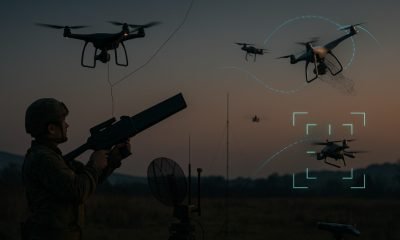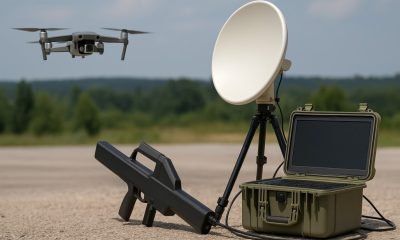Drone News
Emergency Response with Drones

AI and Drones: A Game Changer in Emergency Response
The power of “Emergency Response with Drones” has become increasingly apparent in recent years. Combining AI and drone technology, emergency services can manage crises more effectively and safely.
Historical Overview of Emergency Response
Emergency response has continually adapted to leverage new technologies for more effective crisis management. The advent of drones provided a valuable tool, capable of reaching areas quickly and safely, providing real-time data to inform decision-making during emergencies.
Integration and Impact on the Industry
“Emergency Response with Drones” has revolutionized crisis management. Drones can swiftly reach locations inaccessible or hazardous for humans, capturing real-time video and thermal images that provide crucial information to emergency services.
In cases of wildfires, natural disasters, or search and rescue operations, drones equipped with AI technology have proven invaluable in providing timely aid and reducing risks to human responders.
Key Players and Current Utilization
Leading drone technology companies, like DJI and Parrot, have designed drones specifically for emergency response, featuring advanced capabilities like thermal imaging and autonomous flight. Meanwhile, companies like Edgybees and Skydio provide AI-powered solutions for analyzing drone data and facilitating autonomous operation.
AI Technologies Powering Emergency Response with Drones
Artificial Intelligence (AI) forms the cornerstone of the revolution in emergency response, providing drones with the advanced capabilities needed to assist in crisis management.
Machine Learning and Data Analysis
Machine learning, a subset of AI, plays a critical role in data analysis. As drones collect visual, thermal, and other sensor data during emergency response operations, machine learning algorithms analyze this data in real-time. They can identify and classify objects, locate people, and even predict the progression of fires or floods.
AI-Powered Computer Vision
Computer vision allows drones to ‘see’ and interpret their surroundings. Through AI-powered computer vision, drones can differentiate between different objects in their field of view, assess structural integrity, or locate victims in search and rescue operations. This technology is especially valuable in situations with limited visibility, such as smoke-filled environments.
Autonomous Navigation and Operation
AI technology also enables drones to operate autonomously, which is crucial during emergency situations. Advanced algorithms allow drones to navigate complex environments, avoid obstacles, and adapt to changing conditions. This autonomous operation ensures drones can efficiently carry out their tasks even in dangerous or challenging scenarios.
AI in Predictive Modeling and Simulation
AI-driven predictive modeling and simulations can also enhance emergency response. For example, AI systems can predict the spread of wildfires or the path of a flood, helping responders prioritize areas for evacuation or intervention.
Real-time Decision Making
AI helps to facilitate real-time decision-making during emergencies by processing and analyzing drone data instantly. This immediate analysis allows emergency services to act promptly, potentially saving lives and reducing property damage.
The Future of Emergency Response with Drones
Future advancements in AI and drone technology promise even greater capabilities. Improved autonomous operation, more sophisticated data analysis, and the potential for drone swarms could further enhance the speed and effectiveness of emergency response.
Conclusion
The development of “Emergency Response with Drones” represents a significant leap in crisis management. As AI and drone technology continue to evolve, their role in emergency services is set to become even more indispensable.











